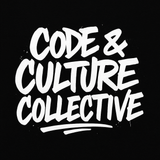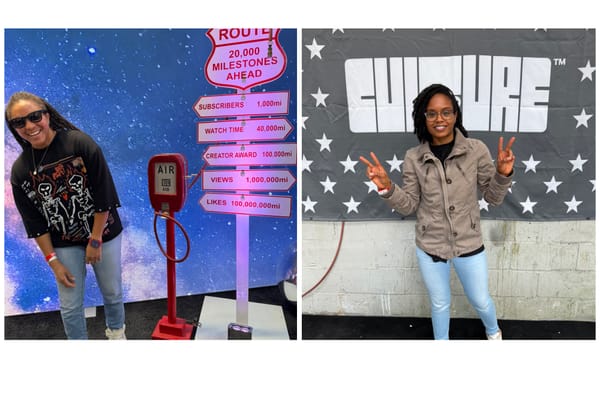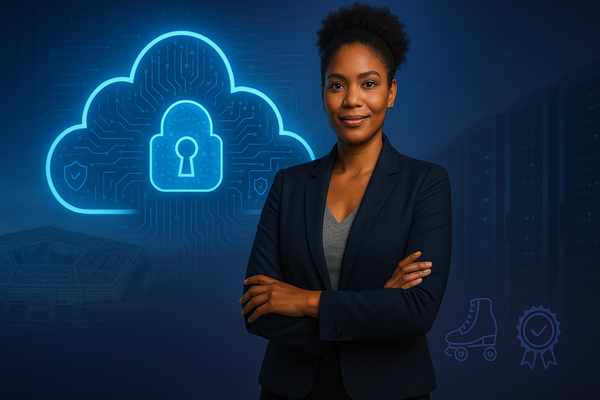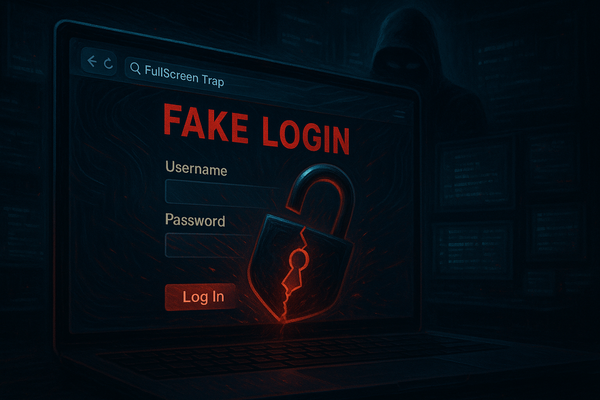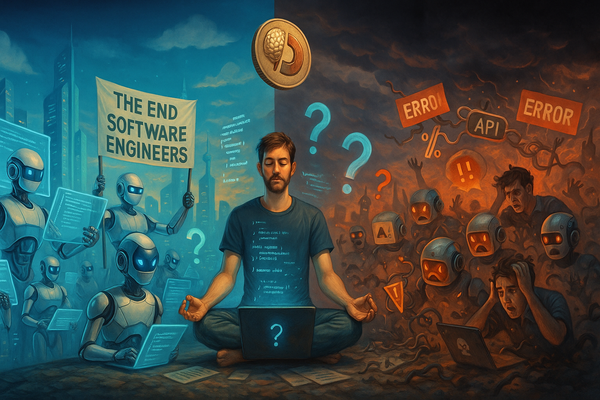Coding a Better Future: How Brianne Caplan is Transforming Tech Education for Underserved Communities
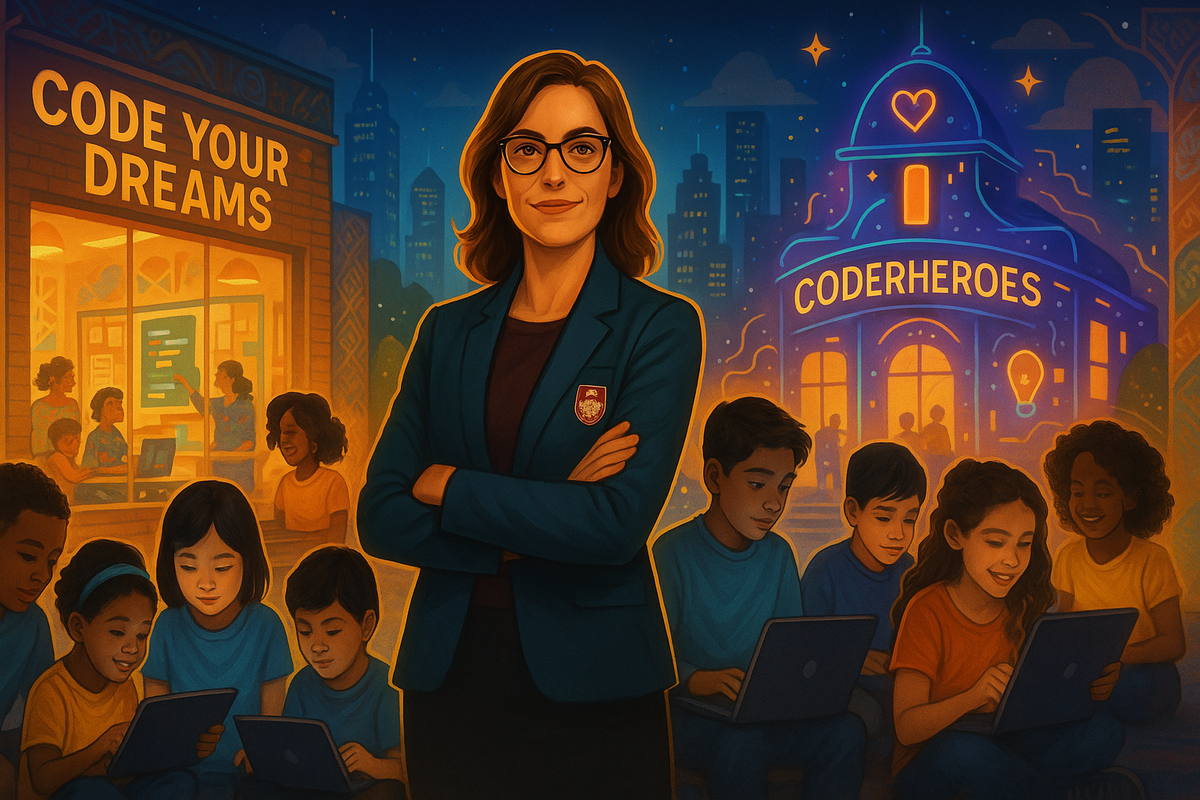
From Data Scientist to Social Entrepreneur
Your transition from a data scientist in the tech industry to founding Code Your Dreams is both bold and inspiring. Can you share the pivotal moments or experiences that ignited this shift, and how your background in data science informs your approach to nonprofit leadership?
Growing up, I was told I was great at the arts and humanities, but not to worry so much about the maths and sciences. When I got to college, I didn’t have any STEM identity. I saw computer science in the course catalog – my first time seeing those words. I decided to try it but was shocked as one of the only women in my class. Not only that, but it was very obvious from day one of introduction to computer science that I was far behind the other students. I was taught to steer away from failure – something that is important in the world of technology and innovation – and I didn’t think I could possibly compete with that room full of students. Facing imposter syndrome, I decided to pursue self-study instead.
When I broke into the tech industry after college as a data scientist, I was faced again with frequently being the only woman on the team or in the room. It was uncomfortable and lonely. But I persisted. That was until I faced blatant harassment (and worse) which made me realize that the tech industry lacked safety for people like me. I was an easy target and the culture allowed me to face situations that weren’t fair or safe.
I saw statistics that half of women leave the tech sector by the age of 35. I was still in my early 20’s and I didn’t want to become a statistic. Rather, I wanted to become a part of the solution. Number one: I saw and was affected by the inequities that exist in computer science education. Number two: I saw and was affected by the implications of a sector that lacked diversity. Number three: I saw the impact of technologies that created biases and harm by not including the communities they serve in the development process.
When I broke into the tech industry after college as a data scientist, I was faced again with frequently being the only woman on the team or in the room. It was uncomfortable and lonely. But I persisted.
This is why I founded Code Your Dreams – a nonprofit organization that breaks down the core issues behind those three problems I experienced. We are creating a world where anyone can walk down the street, see a problem, and build a solution that leverages technology. We work with students as young as kindergarten and are empowering all students to build and innovate for their communities.
Empowering Through Education
Code Your Dreams focuses on providing community-centered computer science education to underserved communities, starting as early as kindergarten. How do you design curricula that are both accessible and engaging for such a diverse age range, and what impact have you observed in these communities since the organization’s inception?
At Code Your Dreams, our curriculum is intentionally built around our students' lived experiences, interests, and aspirations. We ensure that each lesson is culturally relevant and emotionally resonant, empowering students to recognize that technology isn't something distant or abstract— it’s a powerful tool for addressing issues they care about deeply. From elementary schoolers crafting stories through visual coding to high school students designing innovative solutions to pressing local problems, every step is designed to strengthen their sense of agency and belonging.
We also emphasize community collaboration, encouraging students to listen, empathize, and engage directly with the communities they aim to impact. By amplifying student voices and validating their identities, we nurture not only technical skills but also confidence, leadership, and a sense of purpose. Our students leave our programs not just as coders, but as empowered creators ready to change their communities, and ultimately, the world.
The Genesis of CoderHeroes
In response to the pandemic and rising student needs, you founded CoderHeroes, a platform where children discover the magic of coding. What challenges did you face in launching this initiative during such unprecedented times, and how does its “buy-one-give-one” model enhance its mission?
We were in the middle of our school-year programming when, almost overnight, the entire world shut down. One day, we were teaching in classrooms and the next, all of our students were quarantined at home. Within two weeks, we adapted our curriculum from fully in-person to fully online. But there was a huge barrier: many of our students didn’t have computers or reliable internet access at home. That meant they couldn’t continue with us, and in many cases, they couldn’t participate in their regular school programs either. It became urgent to get devices and internet access to 100% of our students.
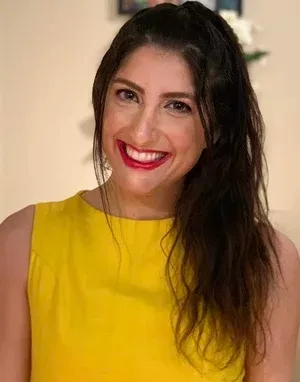
We needed funding and we needed it fast. Grant applications take time. Donors were already stretched thin. I knew I had to get creative. Around that same time, I started receiving a flood of messages on LinkedIn from corporate leaders and executives. Their kids were stuck at home too. Some put it pretty bluntly: “My kids are driving me crazy; do you have anything they can do to learn something valuable and give me a break?”
At first, I was surprised. These families came from well-resourced schools—so different from the students we typically serve. But I quickly saw a unique opportunity to meet their need while supporting our mission. That’s how CoderHeroes was born. Inspired by models like TOMS Shoes, we launched a buy-one-give-one program where families could enroll their child in our coding classes, knowing that their enrollment would sponsor free access for a child from an under-resourced community. It was a win-win.
Of course, it wasn’t without its challenges. Many of our students lacked the tech or a quiet space to learn. We had to get creative with how we kept students engaged online, especially when some would just walk away from their screens mid-session. We had to learn how to support students holistically, even without being in the same physical space.
Inspired by models like TOMS Shoes, we launched a buy-one-give-one program where families could enroll their child in our coding classes, knowing that their enrollment would sponsor free access for a child from an under-resourced community.
It’s now 2025, and we’re still seeing the ripple effects—academic gaps, social-emotional challenges, and widening opportunity gaps. But I think this project is an example of turning uncertain times into powerful opportunities for impact. It’s still a work in progress, but everyday we get a little bit closer.
Championing Diversity in Tech
Your work emphasizes creating pathways for underrepresented groups to enter the technology sector. Can you discuss specific strategies or programs you’ve implemented to bridge the diversity gap in tech, and share success stories that highlight the transformative power of these initiatives?
There isn’t just one reason why the tech industry lacks diversity—it’s a combination of systemic barriers that start early. That’s why our programs begin as early as kindergarten. We believe that every student deserves a chance to see themselves as a creator, innovator, and leader in technology, and that starts by building a sense of belonging in tech spaces.
One of the biggest challenges is that many students don’t feel like they belong in tech classrooms. To address this, we’ve designed our programs to meet students where they are. We train teachers to create learning environments that are culturally relevant, identity-affirming, and rooted in students’ own interests. We help students connect tech to the things they already love—whether that’s art, sports, music, fashion, gaming, or storytelling.
A great example of this is our Robotics & Dance program. Most robotics programs focus on building robots that compete or battle. We wanted to do something different. We designed a program where students could engineer robots and program them to dance alongside real dance teams. Students who never thought robotics was "for them" suddenly saw their creativity come to life in a whole new way. It didn’t feel like a tech class. It felt like their space.
We’ve seen students go from having no tech experience to building apps that address issues in their neighborhoods, presenting their ideas on stages they never thought they’d stand on, and getting tech internships and jobs of their dreams. These moments show the power of designing pathways that don’t just teach coding, but help students build confidence, leadership, and a vision for what’s possible when they bring their whole selves to tech.
Global Outreach and Cultural Integration
Code Your Dreams has extended its reach internationally, including collaborations in East Africa. How do you adapt your educational programs to align with different cultural contexts, and what have been the most rewarding aspects of this global engagement?
We’re grateful to have international partners who don’t just use our programs, but actively collaborate with us to shape them for their communities. We provide the curriculum, training, and resources, but the real magic happens when local leaders take those tools and remix them to fit their culture, language, and lived experiences.
One of the most memorable examples comes from our work in Burundi through a program called Women Building Change. We hired Viviana Marquez, a teacher and data scientist from Colombia, to lead a data science course for 30 women. Viviana brought Afro-Latina cultural influences into the classroom to create connections and build bridges. Together, the group found meaningful similarities between Colombian and Burundian culture, weaving local traditions and stories into the learning experience.
It wasn’t just about teaching. It was about mutual learning. Viviana learned new words in Kirundi, practiced her French, and gained a deeper appreciation for Burundian life. At the same time, the students improved their English and had the opportunity to share their own culture and traditions with someone from across the world.
This spirit of co-creation has sparked powerful outcomes. In Burundi, a student team called “Code Your Beans” developed a tech solution to support the local bean industry, showing that innovation can come from anywhere and be applied to anything.
The most rewarding part of this global engagement is watching students realize that their unique perspectives and cultural knowledge are not only important, but essential to building technology that creates real impact in their communities.
Balancing Roles and Responsibilities
In addition to leading Code Your Dreams and CoderHeroes, you have served as the inaugural Program Director for Careers in Computer Science at the University of Chicago. How do you navigate these multifaceted roles, and in what ways do they complement each other in advancing your overarching mission?
Honestly, it was really hard. Sometimes I look back and wonder how I managed to balance working as a data scientist, building Code Your Dreams, and later, leading the Careers in Computer Science program at the University of Chicago all at the same time.
I’m so grateful that now I get to focus 100% on Code Your Dreams. I actually left what I thought was my dream job as a data scientist to do this work full time. I loved being a data scientist, but the truth is, I couldn’t do both well. I had to choose, and I chose my students.
I left to return to my alma mater and build the Careers in Computer Science program as the inaugural Program Director. The goal was to help undergraduate students succeed in tech. That felt so natural to me because supporting students is what I’ve always loved doing. I had the chance to work with thousands of incredible students, and I took the role because it felt deeply connected to the work I was already doing at Code Your Dreams. It helped ease the pressure I was feeling trying to balance two completely different worlds.
It wasn’t as flashy or high-paying as working in data science, but it was a better fit. It gave me the space to grow as a leader, serve students at scale, and stay true to the mission that matters most to me—making sure every student, no matter their background, feels like they belong in tech.
Impact of Early Exposure to Coding
Starting coding education at a young age can be pivotal. Can you share anecdotes or data that illustrate how early exposure to coding has influenced your students’ academic trajectories or career aspirations?
We have to start early—earlier than most people think. Research shows that STEM stereotypes begin to take hold as early as preschool, and that children who belong to groups negatively stereotyped in STEM, especially girls and students of color, often begin doubting their abilities before they even have a chance to try. Over time, these doubts chip away at their motivation and make it harder for them to picture themselves belonging in these spaces.
That’s why our programs start as early as kindergarten. It’s not just about learning to code—it’s about building identity, confidence, and a sense of belonging before those limiting beliefs have a chance to take root. I often think about the studies showing that even babies benefit when they’re free to explore, play, and get messy. The same is true with coding. Our students learn that mistakes aren’t something to fear, but something to build from. That kind of learning mindset is one of the biggest predictors of long-term success in STEM.
We see it all the time in our programs. I think about students who started with us in elementary school, who are now in high school leading projects on AI, data science, and social impact. I’ve had parents tell me their child used to think tech "wasn’t for them," and now they’re planning to major in computer science.
The research backs this up. Studies show that students who feel like they belong in their STEM classes or majors are more likely to thrive. They stay engaged, they build confidence, and they start to see themselves as leaders in the field. This is why starting early isn’t just a nice-to-have; it’s essential if we want to close the gaps in tech and build a future where every child sees themselves as a creator.
Future Vision for Tech Education
Looking ahead, what are your aspirations for the future of tech education, particularly for underserved communities? Are there emerging technologies or educational methodologies you’re excited to integrate into your programs?
We have to start early—earlier than most people think. Research shows that STEM stereotypes begin to take hold as early as preschool, and that children who belong to groups negatively stereotyped in STEM, especially girls and students of color, often begin doubting their abilities before they even have a chance to try.
I have so many hopes for the future of tech education, especially for communities that have historically been left out of it. Right now, we’re planning to open a community tech and creativity hub where people of all ages can come together to learn, build, and imagine what’s possible. I’m especially excited about expanding into creative coding and tech-art experiences—empowering technologists to tap into their creativity, and artists to harness the power of technology.
I imagine spaces where students build robots that dance alongside live performers, create murals that move, or design art installations made entirely from discarded electronics. I believe these kinds of experiences make technology feel more human, more accessible, and more connected to the world around us.
I’m also deeply invested in preparing the next generation to think critically about responsible tech and AI. We have to move beyond just teaching students how to build technology—we have to teach them to ask should we build it, who it impacts, and what the environmental or social costs might be.
Finally, I’m excited about intergenerational learning—bringing together youth, parents, and professionals to learn side by side. Tech education shouldn’t be something that happens in isolation. It should be a community effort, where everyone’s experiences and ideas are valued. That’s the kind of future I’m working toward every day.
Personal Reflections and Growth
Leading multiple initiatives can be both challenging and fulfilling. How have these experiences shaped your personal and professional growth, and what lessons have you learned that continue to guide your journey?
I think the biggest lesson I’ve learned is that community is everything. None of this work happens in isolation. It takes people coming together, sharing their talents, lifting each other up, and believing in something bigger than themselves.
I’ve also learned that life is short and the world is big. None of us can fix everything, but we can wake up every day and try to make the world just a little bit better. That’s what keeps me going.
I’ve come to realize that my greatest strength isn’t just in the programs I’ve built, but in the people I’ve had the privilege to empower along the way. Helping others dream bigger, believe in themselves, and make an impact—that’s the work I’m most proud of, and it’s what I hope to keep doing for the rest of my life.
Advice for Aspiring Social Entrepreneurs
What guidance would you offer to individuals who are passionate about leveraging technology for social good but may be uncertain about where to begin?
Begin with the community. Don’t start by asking, What can I build? Start by asking, Who is already doing the work? Who is affected? Who cares about this as much as I do?
There is so much strength in community. Find partners, listen deeply, and build alongside the people who are closest to the problem. And when you’re ready—try something. Take that first step, even if it feels small or imperfect.
Your voice has power. Your ideas have value. And you don’t have to do it alone.

Brianne Caplan is a visionary leader in tech education and a former data scientist dedicated to democratizing tech education for all. In 2018, she founded Code Your Dreams, a global nonprofit committed to serving underserved communities. The organization provides community-centered computer science education to students as young as kindergarten, fostering grassroots innovation and instilling a love for technology. In 2020, Brianne expanded her mission by founding CoderHeroes, a platform where children discover the magic of coding. CoderHeroes aims to empower the next generation of young minds with coding skills, infusing lessons with heart, cultural richness, and social-emotional learning. Brianne is a proud graduate of the University of Chicago, where she served as the inaugural Program Director for Careers in Computer Science. In this role, she worked to instill a sense of belonging in all students pursuing computer science pathways, building their skills and confidence to enter the tech industry. Through her innovative programs and passionate advocacy, Brianne Caplan continues to transform tech education, ensuring that every child, regardless of background, has the opportunity to succeed in the digital age.
